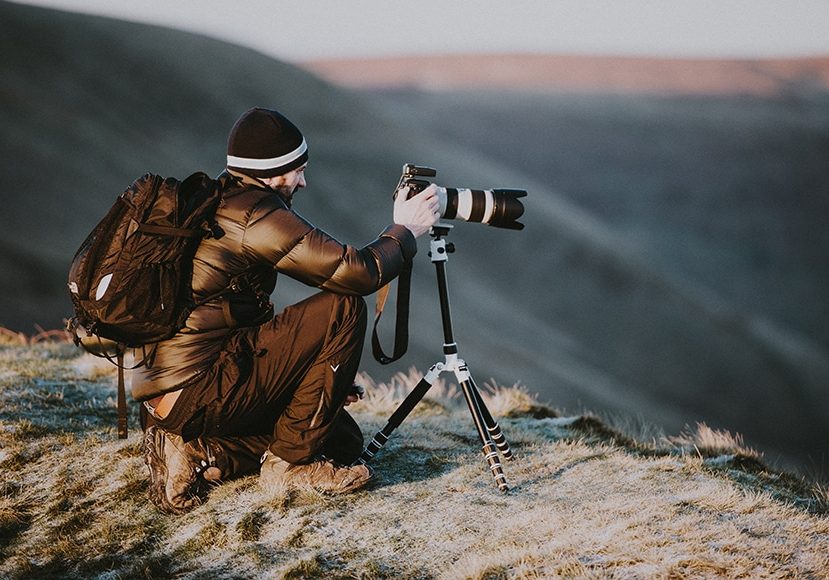Photography is often regarded as more than just an art form—it’s a means of capturing memories, preserving emotions, and telling stories that transcend time. From the early daguerreotypes of the 19th century to the digital photographs that flood social media today, photography has evolved drastically, but its ability to capture moments that last a lifetime remains unchanged. Whether you’re an amateur looking to get started or a seasoned professional, understanding the essence of photography—its techniques, tools, and the emotional resonance it creates—is key to mastering the art of this timeless medium.
In this article, we’ll dive into the artistry of photography, explore the different types and styles, look at the equipment involved, and discuss the importance of photography in shaping our memories and culture.
1. The Power of Photography: More Than Just an Image
Capturing Time and Emotion
At its core, photography is a way of capturing a moment in time. It freezes an instant, a fleeting second, and immortalizes it in a still image. What makes photography unique is its ability to convey emotions, tell stories, and capture the essence of a person, place, or event. Whether it’s the smile of a child, the quiet serenity of nature, or the chaos of a protest, photographs have the power to evoke feelings and memories, often transporting viewers to the exact moment the photo was taken.
A photograph can hold multiple layers of meaning, from the technical aspects like composition and lighting to the emotional weight of the subject matter. Through photography, we preserve the world as it is in that instant, allowing future generations to experience the same feelings and thoughts as those who were present at the time.
Photography as a Cultural Archive
Beyond individual memories, photography has played a significant role in documenting history and shaping culture. Iconic photographs, such as Dorothea Lange’s Migrant Mother (1936) or Steve McCurry’s Afghan Girl (1984), have become symbols of their time, bringing awareness to societal issues, inspiring change, and capturing the human experience. Photographs preserve the moments and movements that define cultures, politics, and entire generations.
In today’s digital age, photography has become even more integral to our daily lives. Platforms like Instagram, Facebook, and Snapchat have turned photography into a constant social activity, allowing people to share their lives instantly with others. While the ways we create and share images have evolved, the fundamental power of photography to communicate remains.
2. Different Types and Styles of Photography
Photography is an incredibly diverse medium, with various types and styles that serve different purposes. Whether you’re taking photos for fun, creating art, or documenting a moment, each type has its own nuances and techniques.
Portrait Photography
One of the most popular and challenging forms of photography is portraiture. This style focuses on capturing the personality and essence of a person or group of people. Portrait photographers aim to showcase their subject’s mood, emotions, and character through lighting, composition, and environment. Whether it’s a formal studio portrait or a candid snapshot, portraits have the power to tell intimate stories.
Tips for portrait photography:
- Use natural light when possible, especially soft, diffused light.
- Focus on the eyes, as they are often considered the most expressive part of the face.
- Pay attention to the background to ensure it complements the subject.
Landscape Photography
Landscape photography captures the beauty of nature, from sweeping vistas and majestic mountains to serene lakes and tranquil forests. This style often requires patience, as nature doesn’t always cooperate with the photographer’s vision. Landscape photographers need to be attuned to light, weather conditions, and timing to capture the perfect moment, often during sunrise or sunset when the light is softer and more dramatic.
Tips for landscape photography:
- Use a tripod to avoid camera shake and capture sharp images.
- Try different compositions and perspectives to add depth to your images.
- Pay attention to the lighting; the golden hour provides some of the best natural light for landscapes.
Street Photography
Street photography focuses on capturing candid moments in public spaces, often reflecting the hustle and bustle of urban life. This style aims to tell stories about everyday life, whether it’s a moment of human interaction, an intriguing juxtaposition of light and shadow, or the essence of a city’s culture. Street photographers must be quick and unobtrusive, often working in busy, unpredictable environments.
Tips for street photography:
- Always be ready to shoot—moments come and go quickly.
- Get close to your subjects to capture raw, unposed emotions.
- Observe the scene before shooting, focusing on the story and mood you want to convey.
Documentary Photography
Documentary photography is a form of storytelling that captures real-life events, often with the goal of providing social, political, or historical commentary. This style seeks to create compelling narratives through images that represent truth and authenticity. Documentary photographers play an essential role in shaping public opinion and raising awareness about important issues.
Tips for documentary photography:
- Focus on the details that tell a larger story.
- Be unobtrusive—try to capture moments without influencing them.
- Research your subject matter beforehand to understand the context and significance of the story.
Fashion Photography
Fashion photography combines art and commerce, focusing on clothing, accessories, and beauty. This genre often requires high levels of creativity, both in terms of the subject matter and the technical aspects. Fashion photographers must work closely with stylists, makeup artists, and models to create visually striking images that evoke the desired mood or aesthetic.
Tips for fashion photography:
- Experiment with lighting to highlight textures and colors.
- Pay attention to the poses and expressions of your models—body language is crucial.
- Work closely with your team to ensure cohesive styling and composition.
Fine Art Photography
Fine art photography is a highly creative form of photography where the photographer aims to produce images that are meant to be appreciated as art. It focuses on the artist’s vision and self-expression, often exploring abstract, conceptual, or emotional themes. Fine art photography can be experimental and sometimes challenges conventional techniques.
Tips for fine art photography:
- Think about your message or concept before taking the shot.
- Don’t be afraid to break the rules and experiment with new techniques.
- Focus on the emotions or themes you want to convey through the image.
3. Essential Photography Equipment
Cameras
At the heart of any photography endeavor is the camera. While modern smartphones have made photography accessible to everyone, serious photographers often rely on digital single-lens reflex (DSLR) cameras or mirrorless cameras. These cameras offer more control over exposure, focus, and depth of field.
Popular camera types:
- DSLR cameras: These cameras provide high image quality and are often favored by professionals for their versatility and wide range of lenses.
- Mirrorless cameras: More compact than DSLRs, mirrorless cameras provide excellent image quality and faster autofocus, making them ideal for both amateurs and pros.
- Smartphone cameras: Today’s smartphones are equipped with powerful lenses and software, making them an excellent choice for everyday photography and casual use.
Lenses
The choice of lens plays a significant role in the quality and style of your photos. Different lenses serve different purposes:
- Prime lenses: Known for their sharpness and wide apertures, prime lenses have a fixed focal length and are excellent for portrait and low-light photography.
- Zoom lenses: These versatile lenses offer varying focal lengths, allowing photographers to zoom in and out, making them ideal for action or wildlife photography.
- Wide-angle lenses: These lenses are perfect for landscape photography, capturing vast scenes with a wider field of view.
Lighting
Lighting is one of the most critical aspects of photography. Natural light, artificial light, and studio lighting all contribute to the overall look and feel of the image. Softboxes, light reflectors, and external flash units are tools that help control lighting and eliminate harsh shadows, especially in studio setups.
Lighting tips:
- Use diffused lighting to create soft, even light for portraits.
- Experiment with backlighting for a dramatic, silhouetted effect.
- Always consider the direction of light and how it shapes your subject.
Post-Processing Software
In the digital age, photography doesn’t end with the click of the shutter. Post-processing software like Adobe Lightroom and Photoshop is commonly used to enhance and refine images. From adjusting exposure and contrast to retouching imperfections, post-processing allows photographers to fine-tune their photos and bring their vision to life.
4. Photography as a Form of Self-Expression
Creativity Through the Lens
Photography is not just a technical pursuit—it is a form of self-expression and creativity. Every photographer brings their own perspective, ideas, and vision to their work. What you capture through the lens reflects how you see the world and what you find meaningful. Whether it’s the stillness of a quiet landscape or the energy of a bustling city, photography allows you to translate emotions and stories into visual art.
Telling Your Story
For many photographers, the process of taking pictures is deeply personal. It’s a way to share one’s journey, beliefs, and experiences with the world. Photographers often use their work to address themes such as identity, society, and personal growth. With the rise of social media, individuals now have more opportunities to share their photographs and connect with audiences globally.
5. Conclusion: The Timeless Nature of Photography
The art of photography is a powerful and transformative medium that continues to evolve, allowing us to capture moments that tell stories and preserve memories for future generations. It’s a way of expressing ourselves, connecting with others, and documenting the world around us. Whether you’re a beginner or a professional, the magic of photography lies in its ability to turn fleeting moments into lasting impressions that last a lifetime.
Key Takeaways:
- Photography captures moments that can evoke emotions and tell stories, providing a timeless connection between the past and the present.
- There are many different styles of photography, including portrait, landscape, street, documentary, fashion, and fine art, each with its unique approach and techniques.
- Understanding essential equipment—such as cameras, lenses, lighting, and post-processing software—helps photographers achieve their creative vision.
- Photography is a form of self-expression and offers endless opportunities for creativity and storytelling.
- In an increasingly digital world, photography remains a powerful tool for preserving memories and shaping our visual culture.
No matter the genre, the goal of photography remains the same: to capture the beauty, complexity, and fleeting nature of the world around us. Through the lens, we can witness moments that would otherwise slip away—moments that live on forever in a photograph.

